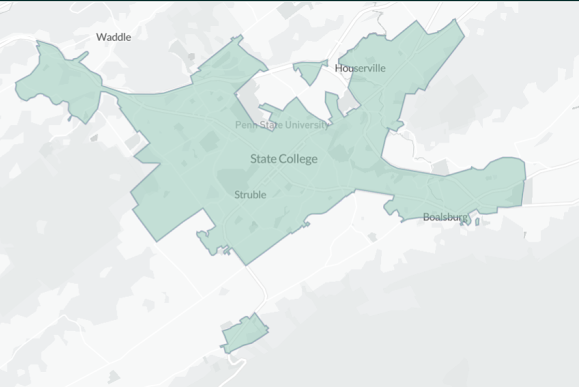City Decentralization and Happy Valley
Written by Evan Ferstl
One thing that has really struck me as our group engages in advocacy is how powerless it can feel as members of the borough because of how little of the urban area is actually governed by State College. The worst parts of the built environment, like along North Atherton street, are not part of the borough, but they have a huge impact on us. If we decide to become a more urbanist community, but Ferguson township, or Patton township, or any of the other municipal bodies adjacent to us continue down their sprawling, car-dependent path, that is going to force tons of cars to commute to the borough no matter what we do. Additionally, many of these places are close enough to downtown that they should be creating more housing. But what if that responsibility falls only on the borough? These are difficult problems to contend with.
One thing I think should be noted is that this is as far from a local problem as problems get. If the whole urban area was State College, the population would be around 160,000, making us the third largest city in the state. However, if you engage in this line of thinking, you also have to consider the population that would be added to all the other towns in PA if they combined with their satellite towns. Allentown’s population would jump to 860,000. Harrisburg would be approaching 600,000. We would be ranked just outside the top 10, if the census’ metropolitan statistical areas are anything to go by. Additionally, everywhere in the world is like this to some extent. However, suburbs are a distinctly American creation, plus the powers we devolve to local governments makes cooperation between them especially important for things to get done.
I think the main takeaway here is that we named our group Strong Towns Happy Valley for a reason. Right now, we have residents from different townships, but we’re rightfully focused mostly on State College with the limited resources we have. However, if we grow our numbers, we can make sure our message is heard across all the communities that comprise our urban ecosystem. That’s the best hope we have for effective change.



Comments
Post a Comment